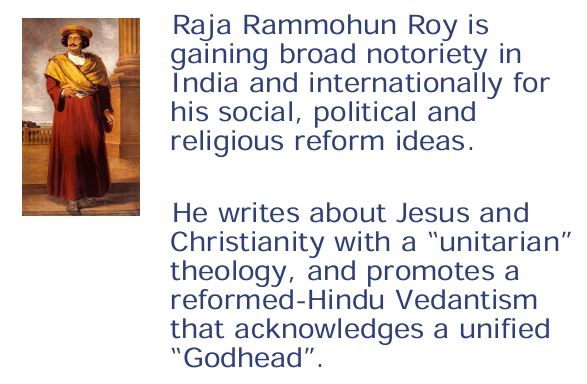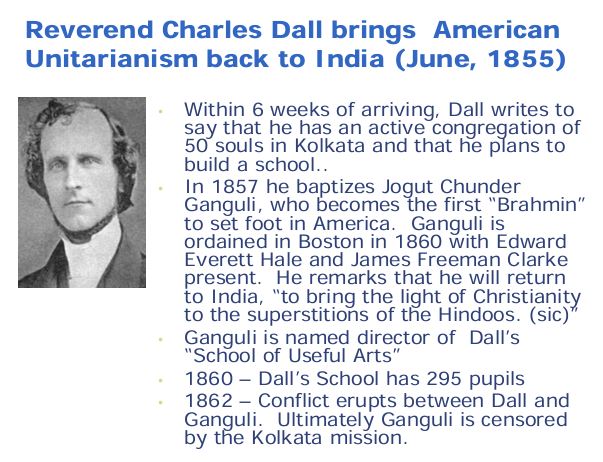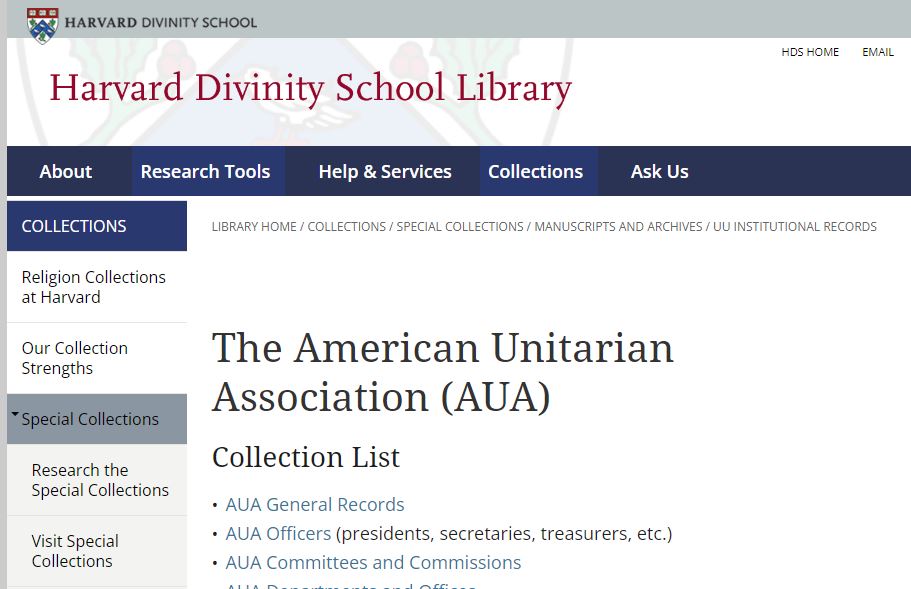Unitarian Engagement in India
Unitarian Universalist International Engagement:
Unitarian Universalist International Engagement:. History and Vision in Three Parts: Part I – The First 125 Years.

Unitarianism in India 1793 – William Roberts (born Thiruvenkatam Vellala Mudaliar on Septemer 30, 1758 in Kanchipuram, Tamil Nadu, India) discovers Unitarian tracts (by Joseph Priestly and Theophillus Lindsey) while working as a servant in England. When he returns home to Madras (Chennai), India, he brings the tracts with him. 1813 – W. Roberts begins holding worship services at a new Unitarian Church in Madras (Chennai). 1818 – W. Roberts requests missionary assistance from American and British Unitarians. He receives materials and limited financial assistance, but not a missionary as requested.
British and American Unitarians learn about William Roberts in the pages of the Christian Reformer in January 1818. In these articles British Unitarian leader, Thomas Belsham, who has been corresponding with William Roberts, is rebuked by one of the magazines readers: One articulate observer took Belsham to task for his statement that the possibility of inducing anyone to submit to the difficulties and perils of a missionary life in order to propagate pure and uncorrupt Christianity… is an event more to be desired than expected. And why not EXPECTED? the reader retorted… if Unitarianism be worth believing, it must be worth propagating. from Unitarians in India Spencer Lavan p28

Meanwhile, in Kolkata… Raja Rammohun Roy is gaining broad notoriety in India and internationally for his social, political and religious reform ideas. He writes about Jesus and Christianity with a unitarian theology, and promotes a reformed-Hindu Vedantism that acknowledges a unified Godhead.
Unitarianism in Kolkata 1821 – Rev. William Adam – a Baptist missionary in Kolkata – begins working with Rammohun Roy on a Bengali translation of the New Testament. In the process, and through conversations with R. Roy, Adam declares that there is no proof of the Trinity in the New Testament. He informs the American Baptist convention that he is now a Unitarian. The Baptists refer to this as the case of the second-fallen Adam 1821 – Adam and Roy create a Calcutta Unitarian Committee.
Rammohun Roy and Rev. Adam in Kolkata… 1822 – Adam details a plan to send missionaries to Calcutta, Madras, Bombay and Colombo with a staff of four in each locale. Instead he receives support of $600/year from British and American Unitarians. 1824 – Rammohun Roy and Adam correspond with American Unitarians including Rev. Jared Sparks and Rev. Henry Ware, Sr. The Christian Register reports on Unitarianism in Kolkata. 1826 – Henry Wares Berry Street Lecture of 1827 calls for Unitarian clergy to support the Indian mission. Adam writes O, what a wide door is open for Unitarians here if they would only enter and take possession!
Unitarian minister, Rev. Joseph Tuckerman, describes why Unitarians have a responsibility to extend their sympathy to… the world 1. Unitarians believed that anyone could be saved, regardless of whether he was a Christian or not; 2. Unitarians had been critical of the way in which Christian missions had been conducted – the waste of excitement, money and life. Tuckerman ends with the recommendation: Instead of sending twenty or thirty men, let Unitarians spend their money training two or three without narrowness or bigotry.
But it is not to be… 1828 – R. Roy decides not to pursue Unitarianism, but to organize Hindu unitarians into a Brahmo Samaj (Society of the Worshippers of One God. His work with the Unitarian mission in India ends in 1829. 1830 – Adam resigns as a Unitarian missionary and eventually declares that he entirely regrets his association with Unitarians. The Unitarian Mission in Kolkata ends. 1833 – Rammohun Roy dies while lecturing in England. 1838 – The Unitarian Society for the Promotion of Christianity in India votes to disband, and gives its funds to the Benevolent Fraternity of Unitarian Churches. Outside of this storm, the Unitarian Church in Madras continues to exist.
Unitarianism and India: The tale begins again… 1854 – Unitarian minister, Rev. Charles Brooks, visits India for 2 months. He makes contact with Rev. Roberts in Chennai and finds that this Unitarian community has survived against unlikely odds. Rev. Brooks makes contact with the Brahmo Samaj and remaining Unitarians in Kolkata. Rev. Brooks returns home, reports his experiences to the AUA Trustees, and they decide to initiate a new mission in Kolkata, sending Rev. Charles Dall.

Reverend Charles Dall brings American Unitarianism back to India (June, 1855) Within 6 weeks of arriving, Dall writes to say that he has an active congregation of 50 souls in Kolkata and that he plans to build a school.. In 1857 he baptizes Jogut Chunder Ganguli, who becomes the first Brahmin to set foot in America. Ganguli is ordained in Boston in 1860 with Edward Everett Hale and James Freeman Clarke present. He remarks that he will return to India, to bring the light of Christianity to the superstitions of the Hindoos. (sic) Ganguli is named director of Dalls School of Useful Arts 1860 – Dalls School has 295 pupils 1862 – Conflict erupts between Dall and Ganguli. Ultimately Ganguli is censored by the Kolkata mission.
Dalls ministry continues… 1866 – An AUA Hindu Girls School opens in Kolkata. It has 96 pupils enrolled in 1877. 1860s and 70s – Dall develops a friendship with Keshub Chunder Sen, a Brahmo Samaj leader. Ultimately theological conflict develops between Brahmos and Unitarians. The conflict heightens when Dall joins the Brahmo Samaj, though he declares he is still a Unitarian Christian. 1880s – Dall provides tracts for Hajjom Kissor Singh in the Khasi Hills of North East India. 1886 – Charles Dall dies
What began in excitement and idealism ended in controversy, pettiness, and much disillusionment. Unitarians in India Spencer Lavan p.130
But, as it turns out, all is not lost… Rev. Jabez T. Sunderland (Unitarian Minister in Ann Arbor, MI) travels to India – 1895-6. Sunderland visits the Chennai Unitarians. William Roberts Jr. (the son of the churchs founder) is the minister, but the congregation is crippled by want of funds. Eighty people attend a service led by Sunderland.
Rev. Jabez T. Sunderland visits India Reverend Sunderland visits the Khasi Hills Unitarians. He spends time with Hajom Kissor Singh who led Khasis to Unitarianism after becoming disillusioned with the Presbyterianism of Welsh missionaries. Founded in 1887, the Unitarian Union of North East India is influenced by traditional Khasi tribal faith, by the Brahmo Samaj, and by British and American Unitarianism. Hajjom Kissor Singh
But, the missions report at the 1891 meeting of the AUA mentions nothing about India. Instead… (according to Appletons Annual Encyclopedia)
… The report of the Board of Directors spoke of the increasing breadth, variety, and amount of the work of the association, which now included Hungary and Japan, and extended on the American continent from Winnipeg on the north to the Gulf of Mexico on the south…
More:

